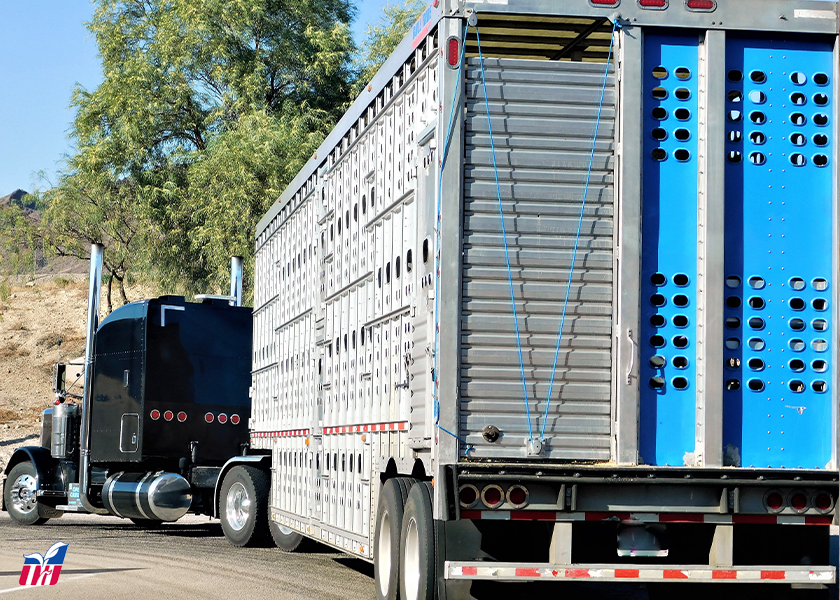Livestock Analysis | November 22, 2023

Price action: December lean hogs rose 10 cents to $68.275, following narrow trade.
5-day outlook: December lean hogs saw limited volatility throughout the session though deferred contracts saw losses. The CME lean hog index fell 34 cents to $74.18 today (as of Nov. 20). The preliminary calculation for Friday puts the index down another 28 cents to $73.90, which would mark a fresh seasonal low. Negotiated head counts have been down this week, indicating that plants are running at a reduced capacity due to the holiday. Volatility could spark back up as plants need to process more animals next week, but weakness seems likely to persist. That will translate over to futures over the coming week, as traders eye the cash market for clues on the near-term direction.
30-day outlook: After rallying nearly $9.00 in just a few short weeks, December lean hogs have quickly erased over half of those gains in the following two weeks. Wholesale pork prices have traded mostly sideways for over a month now, with today’s midsession gain of $1.88 to $87.09 erasing yesterday’s loss. The rebound was led by a jump in picnics, which have remained volatile over the past week. Hog slaughter is likely to surge as the industry gets back to work after the holiday, with the weekly total probably reaching its annual peak during the week ending Dec. 16 (since Christmas on a Monday will likely truncate packing industry activity on Saturday, Dec. 23). Wholesale ham and turkey demand should also prove strongest in mid-December, with ham prices then tumbling when grocers have largely met their holiday needs. Hog and pork prices seem likely to be well-supported through midmonth, then prove vulnerable to a drop to fresh fourth-quarter lows between the Christmas and New Years holidays.
90-day outlook: The first quarter of the year has traditionally tended to experience moderate gains during the first six-seven weeks of the year, followed by seasonal pressure during Lent. However, in recent years, particularly in early 2023, the market proved surprisingly weak through much of the first quarter. Seasonal and cyclical reductions in hog and pork production would likely give the complex a boost, but the former seems much more likely than the latter. Active ham buying for Easter features has often supported the market early in the year, but greatly elevated retail ham prices undercut that market, and hog prices, in early 2023.
What to do: Get current with feed advice. Carry all production risk in the cash market for now.
Hedgers: Carry all risk in the cash market for now.
Feed needs: You have all corn-for-feed and soymeal needs covered in the cash market through November.
Price action: February live cattle futures closed down 80 cents at $175.275 and near the session low. January feeder cattle futures lost $1.20 to $227.125 and nearer the daily low.
5-day outlook: The weak near-term technical postures for live and feeder cattle futures markets suggest the speculative bears will press their case on the downside in the near term. Cash cattle market fundamentals have weakened a bit recently. Reports from cattle sources today said there was limited cash cattle trade Tuesday in the south at $176.00, with the north coming in at $176.00 to 178.00. On a dressed basis, cash bids were $278.00 to $280.00 in Nebraska. The noon report today showed Choice grade boxed beef cutout value up $1.17 to $296.98, while Select grade fell $1.78 to $266.99, widening the Choice/Select spread to $29.99. Movement at midday today was good at 114 loads.
30-day outlook: Steer dressed weights that are steady to slightly down from last year at this time suggest supplies of market-ready animals in feedlots remain tight. The seasonally wide Choice/Select spread also implies tighter supplies of quality market ready cattle. The next monthly USDA cattle-on-feed report in late December will provide the next update on the U.S. cattle herd.
90-day outlook: The U.S. stock market has posted a strong rebound from the late-October lows as the Federal Reserve has hinted it may be done raising interest rates, at least for a few months. This has consumers heading into the holidays and into the new year in upbeat moods and with confidence that better economic times lie ahead. Such should keep consumer demand for retail beef robust despite still historically elevated prices at the meat counter.
What to do: Get current with feed advice. All production risk in the cash market for now but be prepared for some hedge coverage as we have demand concerns.
Hedgers: Carry all risk in the cash market for now.
Feed needs: You have all corn-for-feed and soymeal needs covered in the cash market through November.






